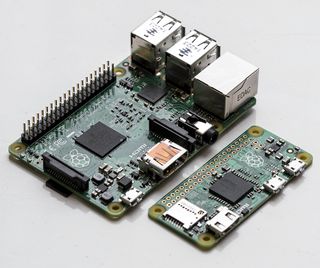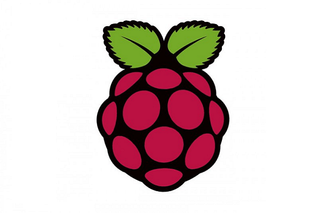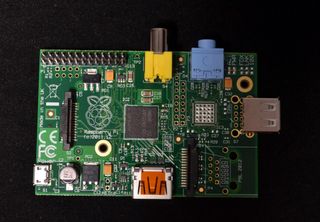Raspberry Pi setup guide, top projects and price: New Raspbian build offers RealVNC remote access
Now you can remotely manage your Raspberry Pi project from a tablet or PC

The Raspberry Pi has sparked a genuine computing revolution. The tiny micro-computer has taken the world by storm, with a massive hobbyist fanbase and increasing business adoption.
We've rounded up everything you need to know about the little PC that could, including its history, price, model versions and more.
Raspberry Pi: latest news
28/09/2016: The latest version of Raspberry Pi's Raspbian operating system lets you remotely manage your Raspberry Pi project from a tablet or computer.
The September release of Raspbian includes RealVNC's remote access software after the Cambridge-based company became the Raspberry Pi Foundation's official partner for the technology.
Provided free of charge for educational and non-commercial purposes, RealVNC'sVNC Viewer and VNC Server software will come pre-installed with the Raspbian OS, the Debian distro custom-developed to run Raspberry Pis.
"I am really pleased to be including the RealVNC software in our September 2016 release of Raspbian," said Raspberry Pi co-creator Eben Upton. "The RealVNC team have a great reputation for quality, high-performance software and excellent platform support, making it the perfect solution for the Raspberry Pi community."
"They have a long history of supporting our educational events and activities," he said. "This new agreement is the next logical step in our active partnership."
Get the ITPro. daily newsletter
Receive our latest news, industry updates, featured resources and more. Sign up today to receive our FREE report on AI cyber crime & security - newly updated for 2024.
"We share our Cambridge academic roots with the Raspberry Pi Foundation, and also have a mutual vision and commitment to educating the next generation of engineers," explained RealVNC COO Adam Greenwood Byrne.
"We see this announcement as just the next chapter in our partnership, and we look forward to exploring new educational and commercial opportunities in the future."
09/09/2016:Raspberry Pi has now sold 10 million microcomputers, founder Eben Upton confirmed yesterday.
The best-selling budget mini-computer managed to ship that number in just four-and-a-half years, Upton said, writing on The Raspberry Pi Foundation's blog.
Upton started producing the devices in 2012 in order to pique interest in computer science, offering children a similar device to the Sinclair Spectrum and BBC Micros that started a wave of interest in coding in the 1980s.
"At the time, we thought our lifetime volumes might amount to ten thousand units if we were lucky," Upton wrote. "There was was no expectation that adults would use Raspberry Pi, no expectation of commercial success, and certainly no expectation that four years later we would be manufacturing tens of thousands of units a day in the UK, and exporting Raspberry Pi all over the world."
The milestone makes the Raspberry Pi the UK's bestselling computer, after hitting the eight million mark in February this year.
Now the Pi is on its third version, Pi 3 Model B, and Upton told Wired he does not expect to release a new one for at least three years, though a software update will arrive before the end of September.
People around the world have embraced the Pi to power everything from a Tor router to a cat feeder.
Some of the most notable projects include British astronaut Tim Peake taking two Pis to the International Space Station, where they ran applications coded by UK classroom pupils.
The Raspberry Pi Foundation has released a new starter kit to commemorate the 10 million devices sold.
04/08/2016: Israeli tech company SolidRun has developed a $70 (55) networking kit inspired by Raspberry Pi to helpdevelopers create their own hardware that can be used to create their own telecom-grade routers.
Built upon a Marvell Armada 38x SoC processor, The ClearFog Base kit runs on the open source OpenWrt software and can help technology enthusiasts build routers providing a connection reaching up to a Gigabit. The micro computers will also offer embedded storage, just like a Raspberry Pi.
"We developed our ClearFog single board computer to take full advantage of the power offered by Marvell's Armada 38x SoC and to give users a head start in engineering new products based on this powerful new platform," SolidRun's co-founder and technology leader Kossay Omary explained.
"Our new ClearFog Base open development system is an ideal solution for those looking for a powerful SBC in a compact form factor, with a plethora of I/O options to serve a wide array of potential applications."
Home developers can use SolidRun's ClearFog Base to create their own products that can present a wide range of network standards, such as LAN, Wi-Fi, LTE, Fiber, and DSL.
Additionally, add-ons can be plugged into bolt on IoT networking standards including ZigBee, Sub GHz and Bluetooth, to hook the device up with peripheries.
28/07/2016: The Raspberry Pi is set to be used as the brain of an autonomous racing car.
The idea comes from Piborg, which makes robotic kits for the tiny computer. It has built a track at its UK headquarters and plans a racing series called Formula Pi using the self-driving vehicles. PiBorg has set up a Kickstarter campaign with a modest 2500 goal.
Formula Pi gives developers a chance to hack about with autonomous driving code that they can download from the Formula Pi site. The code can be modified and then cars can race other Raspberry Pi-based cars on a special track.

Entrants can sign up for the race for 35 and receive a customisable lid that holds the Raspberry Pi computer on a racing car. The aim of the contest is to go as fast as possible around the track while avoiding other cars. The track features laser controlled finishing line and the car will run on Zeroborg motor platform.
28/06/2016:Raspberry Fi foundation's founder, Eben Upton, has told Wired that rumours of Android support for the microcomputer are "promising".
Android support for Raspberry Pi has been rumoured after Google opened a new tree for the microcomputer in its Android Open Source Project repository in April.
He said this month, upon being made a CBE in the Queen's Birthday List: "It's a promising sign and a nice compliment to the open source community."
But he added that the foundation has not had time to work on developing support because it is focusing on building as many devices as possible, though many open source Android users would be keen to make use of the operating system on a Raspberry Pi.
27/06/2016:Kodi has revealed a Raspberry Pi case, it's first hardware release, to turn the Raspberry Pi into a budget media centre, reports The Verge.
Created in partnership with Flirc, the aluminium case has been designed to look attractive plus act as a heat sink to keep the Pi cool inside. It is currently available as a limited edition, but high demand could convince Kodi to make more.
A percentage of the profits will be donated to cancer research.
16/05/2016:The 4 Raspberry Pi Zero has received a boost in functionality, with the announcement of a new onboard camera connector.
The FPC connector is the same part that graces the foundation's compute module, used in development and industrial environments.
The Raspberry Pi Foundation's engineers were able to fit the component onto the minuscule board's right-hand side by reshuffling the existing elements, without increasing the original unit's size.
The announcement follows the launch of two Sony-made 8 megapixel imaging modules last month, which allow users to capture fixed-focus images at a 3280 x 2464 resolution.
The new feature was added during the production hiatus directly following the Zero's launch, founder Eben Upton explained, after the foundation's entire stock ran out in a matter of hours.
The foundation has apparently learnt its lesson from the original Zero's launch, and there will be 30,000 of the newly updated models available today.
Upton also assured that the foundation will "be making thousands more each day until demand is met".
07/04/2016: Ubuntu Mate for the Raspberry Pi now features support for the Raspberry Pi 3's new built-in WiFi and Bluetooth chips.
The open-source operating system, a specialised variant of one of the most popular Linux builds, has now been updated to the second Beta version of build 16.04.
The OS now has a new welcome screen, and several features unique to the Raspberry Pi. It also features support for hardware-accelerated OpenGL, a display rendering technology that allows for far more sophisticated graphics processing.
Martin Wimpress, leader of the volunteer team responsible for overseeing the project, made a point of specifically thanking Pi Podcast presenters Joe Ressington, Winkle ink and Isaac Carter for testing the build.
According to Wimpress, the three gave "valuable feedback", saying that "thanks to them this Beta is in pretty decent shape".
The Beta is available to download now for the Raspberry Pi 2 and Raspberry Pi 3.
Raspberry Pi: what is it?
Let's start from the top; for those not already familiar with it, the Raspberry Pi is a super-cheap single-board computer designed to get kids into programming.
Devised by Eben Upton and a group of computer scientists at Cambridge University, the Raspberry Pi was intended to give children and teenagers a simple way to get into coding and physical computing, without the financial risk of turning them loose on expensive family PCs.
The Pi was a huge hit with children and adults alike and has jumpstarted a cottage industry of hobbyists, who have put the micro-computer to some incredible uses.
Raspberry Pi: what can it do?

The Raspberry Pi has a whole host of different applications, including as a mini-PC. It's not hugely powerful, but it's capable of doing basic word processing and office tasks, and also works well for simple internet browsing, although HTML-intensive pages might slow it down.
It's also been used extensively for retro gaming and emulation - it's just about powerful enough to run classic NES and SNES games, and the newly-announced OpenGL support means it could potentially handle from as recent as the early 2000s.
IoT projects are popular amongst the Pi's vibrant modding community, and users have turned their Pis into weather monitoring stations, home automation controllers, smart mirrors and more.
The Raspberry Pi is also perfect for use as a thin client for businesses with remote access needs. There's software to support Microsoft Remote Desktop, VMWare, X3270 and Citrix.
Take a look at our list of the best Raspberry Pi projects to see some of the most inventive creations from around the internet. The Raspberry Pi Foundation's website also has a list of education resources for teachers who want to use the Pi, which can be found here.
Raspberry Pi: models
The Raspberry Pi comes in a number of flavours if you'll pardon the pun. In total, there have been seven variants released, with certain models being phased out as they get replaced by newer and more capable ones.
The original Raspberry Pi (or the Pi 1) was released in two versions; A and B. Model A was cheaper, but less powerful, with 256MB of RAM as opposed to the B's 512MB. The B hadtwo USB ports while the A had one, and it was also the only one with a wired Ethernet connection for internet access.
These were replaced by the A+ and B+ models in 2014, which were cheaper and more refined versions, intended to bridge the gap between the Raspberry Pi 1 and Raspberry Pi 2.

Raspberry Pi 2
Confusingly, although the Pi 2 was released as the Raspberry Pi 2 Model B, there was no Pi 2 Model A. Compared to the original Model B, however, it was a substantial upgrade, boosting the CPU speed and RAM size to 900MHz and 1GB respectively. It also doubled the number of USB ports.
In November 2015, the Pi family was joined by the Raspberry Pi Zero. Not only was it roughly the size of a pack of chewing gum, it still managed to pack in a 1GHz processor and 512MB of memory. Best of all, though, the Pi Zero costs a mere 4.
It was so small and inexpensive, in fact, that the official Raspberry Pi magazine gave them away on the cover of its magazine. Both the Pi Zero and the magazine completely sold out within a matter of hours, however, and supply still remains scarce.
The latest Raspberry Pi to be unveiled is the Raspberry Pi 3.
The Pi 3 is more sophisticated than ever - along with a 1.2GHz 64-bit CPU, it's also got Bluetooth and Wi-Fi connectivity built in. This added functionality is something that users have been crying out for, and its addition makes the Pi 3 even more useful than its predecessors.
Raspberry Pi: price

One of the defining features of the Raspberry Pi is how cheap it is - at around 30 for the Raspberry Pi 3, it's one of the cheapest computers around.
If you don't need quite as much processing power, the Model A+ is available for under 20 and still offers a full Raspberry Pi experience.
For the truly cash-strapped, the sub-5 Raspberry Pi Zero is an absolute bargain. Unfortunately, they're so popular that you might find yourself struggling to get hold of one.
Raspberry Pi: setup guide
The Raspberry Pi may look confusing to set up, but it's actually fairly simple. The hardest part is loading the operating system onto the device. The Pi doesn't have anyinbuilt storage, using a MicroSD card as a hard drive instead.
You can buy pre-prepared MicroSD cards from various Raspberry Pi stockists, with all the necessary software loaded and ready to go. If you want to use your own MicroSD card, however, you'll need to format it first, which can be done using inbuilt tools on both Windows and OSX.
Once you've got a formatted MicroSD Card, you'll need to prepare an operating system to load onto it. Due to the Pi's low-powered nature, it needs specially-adapted software based on popular Linux distros.

Raspberry Pi Model A
From the Raspberry Pi website, users can download the New Out Of the Box Software installer (NOOBS). Alongside an installation wizard and versions of operating systems like Ubuntu and OpenELEC, this package also contains a specially created version of Debian, called Raspbian.
Download NOOBS, extract the package's contents to your computer, and transfer them to your formatted MicroSD card. Once that's done, slot the card into your Pi, plug in a monitor, keyboard and mouse, connect the power and power it on.
Once it's turned on, the Pi will automatically present you with a list of distros to choose from. Select one, and wait for it to install. Raspbian is recommended, as it's the one the Pi is designed to work with best.
The Pi will boot into the command line by default, but if you'd rather it boot to a more traditional desktop environment, this is easily fixed. After installation, a dialogue box will pop up. From here, you can change whether your Pi boots into the command line or desktop.
Once that's done, you'll be all set to start using your Raspberry Pi for whatever projects you like.
Caroline has been writing about technology for more than a decade, switching between consumer smart home news and reviews and in-depth B2B industry coverage. In addition to her work for IT Pro and Cloud Pro, she has contributed to a number of titles including Expert Reviews, TechRadar, The Week and many more. She is currently the smart home editor across Future Publishing's homes titles.
You can get in touch with Caroline via email at caroline.preece@futurenet.com.





